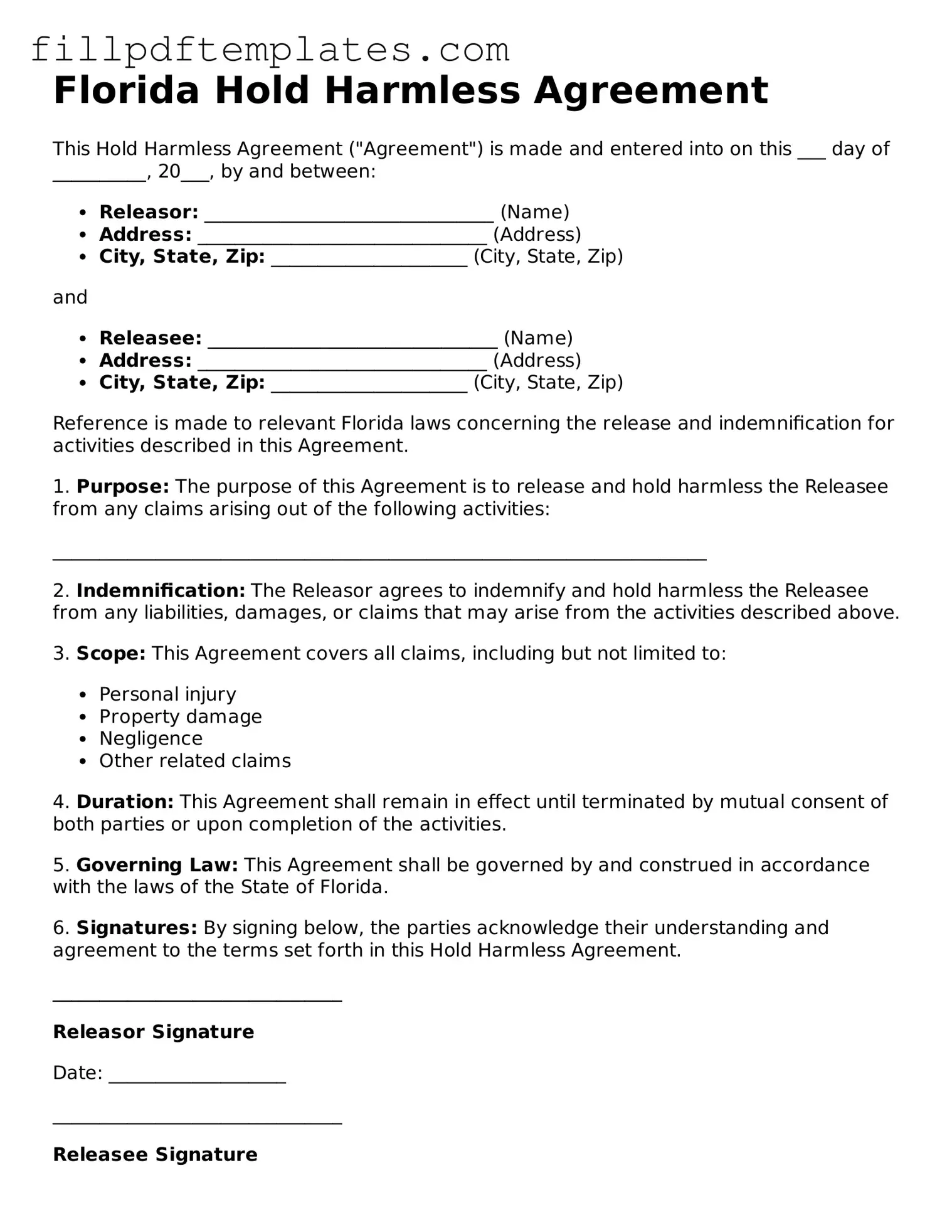Florida Hold Harmless Agreement
This Hold Harmless Agreement ("Agreement") is made and entered into on this ___ day of __________, 20___, by and between:
- Releasor: _______________________________ (Name)
- Address: _______________________________ (Address)
- City, State, Zip: _____________________ (City, State, Zip)
and
- Releasee: _______________________________ (Name)
- Address: _______________________________ (Address)
- City, State, Zip: _____________________ (City, State, Zip)
Reference is made to relevant Florida laws concerning the release and indemnification for activities described in this Agreement.
1. Purpose: The purpose of this Agreement is to release and hold harmless the Releasee from any claims arising out of the following activities:
______________________________________________________________________
2. Indemnification: The Releasor agrees to indemnify and hold harmless the Releasee from any liabilities, damages, or claims that may arise from the activities described above.
3. Scope: This Agreement covers all claims, including but not limited to:
- Personal injury
- Property damage
- Negligence
- Other related claims
4. Duration: This Agreement shall remain in effect until terminated by mutual consent of both parties or upon completion of the activities.
5. Governing Law: This Agreement shall be governed by and construed in accordance with the laws of the State of Florida.
6. Signatures: By signing below, the parties acknowledge their understanding and agreement to the terms set forth in this Hold Harmless Agreement.
_______________________________
Releasor Signature
Date: ___________________
_______________________________
Releasee Signature
Date: ___________________
